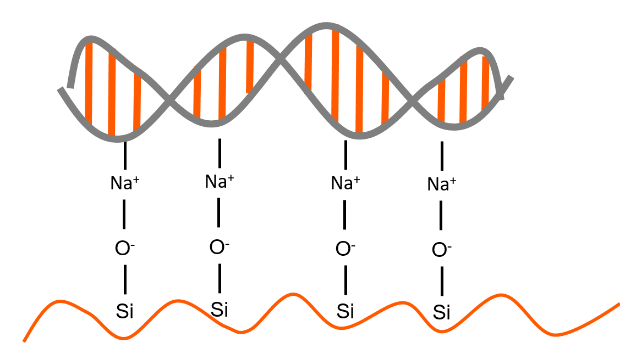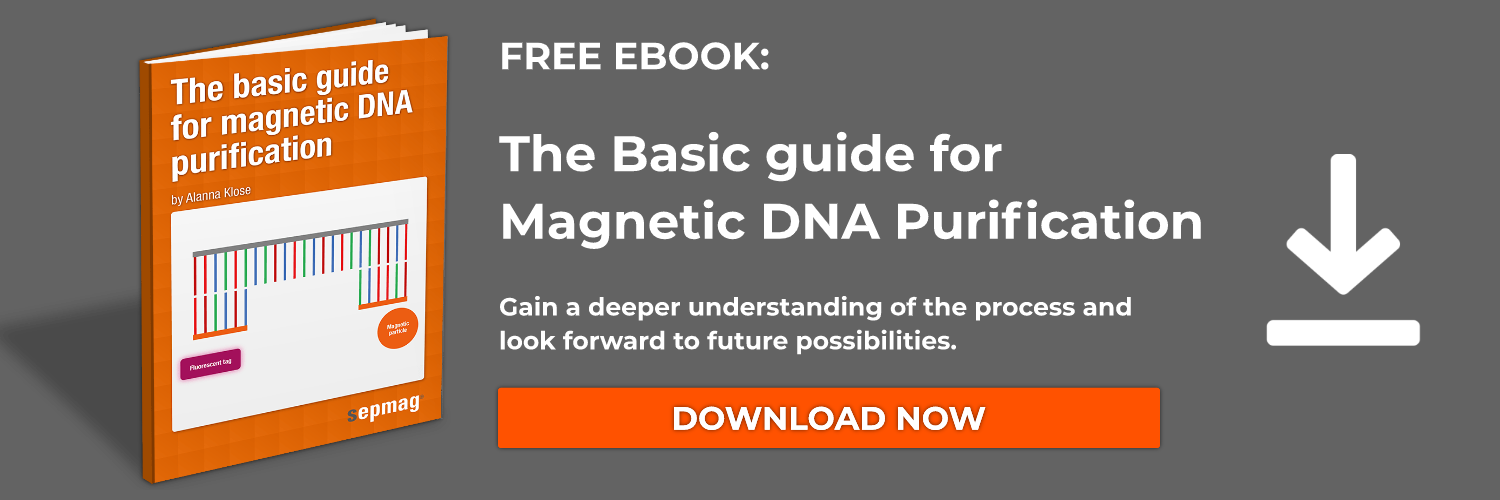The traditional solid-phase support system is a static column. These columns are made of silica matrices or anion-exchange resins. They are porous and allow the solution to flow through them. These non-magnetic solid-phase columns require centrifugation to force the solution through. More recently, magnetic particles are being used as mobile solid-phase support systems for capture and purification of DNA and RNA. These magnetic particles are added to solution and are free to move around during the DNA or RNA adsorption period. They are then retrieved by magnetic separation. No centrifugation is needed for magnetic-particle nucleic acid purification.
Free dowload: Magnetic dna purificationTraditional silica-based columns
DNA or RNA adsorbs specifically to silica matrices in a high-salt buffer at optimal pH. These matrices are made of silica nano- or micro-particles packed into a resin. The pores between the particles allow the solution to flow through the column. Proteins, carbohydrates, and other contaminants are washed out through the column. The purified DNA or RNA is then collected in a final elution step with a low-salt buffer.
Anion-exhange resin columns
These columns are made of a silica nanoparticle resin that has a large pore size and a dense hydrophilic coating of positively charged DEAE groups. Plasmid DNA binds to the DEAE groups in a medium salt buffer while impurities are washed away. Finally, DNA is eluted in a high-salt buffer. Other anion-exchange resins such as cellulose, dextran, or agarose have been used to make separation columns, but they work in a narrower salt concentration range. The salt concentration and pH can be modified to selectively bind RNA to the column while washing away DNA and other contaminants. Commercial kits are optimized to isolate RNA or DNA, and often have options of differentiating between plasmid and genomic DNA, or isolating specific types of RNA.
Magnetic Particles
The magnetic particles consist of a superparamagnetic core, protected by a coating. The coating prevents irreversible aggregation of the magnetic particles and allows functionalization by the attachment of ligands for adsorption of DNA or RNA. The magnetic particles have a higher surface area than packed columns, which gives them a higher capacity to adsorb nucleic acids, and their ability to be added to solution improves adsorption efficiency. The solution containing DNA or RNA must flow through the column, which limits the time for DNA or RNA to adsorb, whereas magnetic particles can be incubated in the solution for as long as necessary to achieve optimal adsorption.
Column-based purification systems are widespread, and form the basis for many commercial DNA or RNA purification kits. However, these columns require centrifuges, buffers, solvents, and multiple washing steps. Column purification is only useful for non-specific binding of all DNA or RNA in a sample. Magnetic particles can be used for specific nucleic acid capture. Magnetic DNA/RNA purification doesn't require a centrifuge and can be completed within one tube. This means that magnetic particle nucleic acid purification can be fully automated. Additionally, the ability to functionalize magnetic nanoparticles opens the door to capturing specific DNA or RNA sequences. Reversible binding of magnetic particles also introduces a potential for reuse, which can decrease waste and expenses.
Related news




